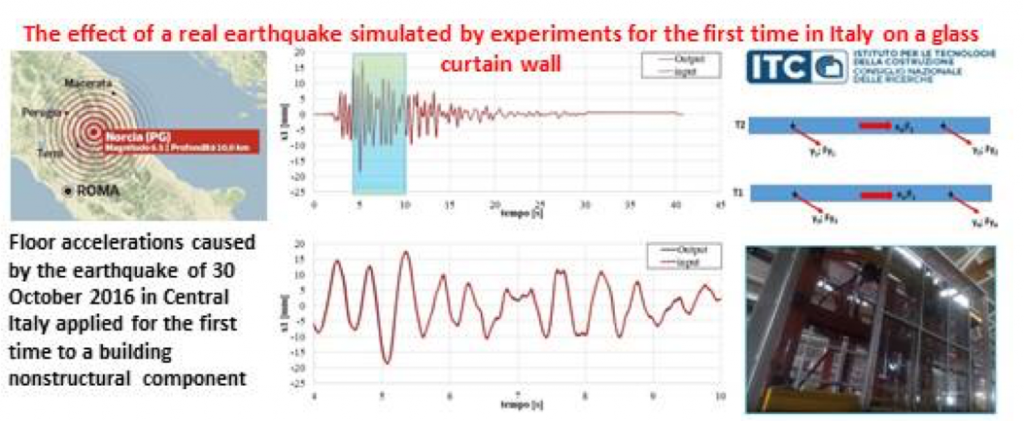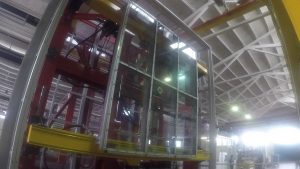The effect of a real earthquake simulated by experiments for the first time in Italy on a glass curtain wall
The effect of a real earthquake simulated by experiments for the first time in Italy on a glass curtain wall.
This outstanding test was carried out at the Headquarters of ITC-CNR in San Giuliano Milanese (Milan) using a specially designed equipment implemented in a way so as to reproduce the real effects of an earthquake, both in-plane and out-of-plane, on a 6 m x 8 m glass curtain wall.

The tests performed allowed to simulate the earthquake of Central Italy, especially the time histories recorded on October 30, 2016 at 6:40 a.m. on the third and fourth floor of the school “De Gasperi-Battaglia” in Norcia (Perugia). It is worth recalling that the moment magnitude of the earthquake of 30 October was estimated as 6.5 and that the earthquake was felt in most of the Italian peninsula, making it the strongest earthquake in Italy since the earthquake of Irpinia in 1980. The earthquake originated at a depth of about 10 kilometers, with the epicenter located in the province of Perugia just near the city of Norcia. The recorded PGA values were around 0.60 g.
The accelerations obtained during the tests showed values greater than 1.0g (higher than gravity accelerations!) which are compatible with those measured in the upper floors of mid-rise to high-rise buildings during a medium-high intensity earthquake.
Unlike the tests generally performed in both national and international laboratories, this one-of-a-kind test does not entail static or dynamic stresses “equivalent” to those that are usually associated with an earthquake. On the contrary, the curtain wall is subjected to exactly the same accelerations measured on a real building during one of the most devastating earthquakes in the recent history of Italy. The huge amount of information coming from the test results called for a thorough re-examination of the current seismic safety criteria for nonstructural components, such as curtain walls incorporated in the building envelope.
Furthermore, the test equipment can perform airtightness and watertightness tests on curtain walls with dimensions up to 6.3 x 8.0 m. The tight chamber consists of 5 walls (3 vertical and 2 horizontal) and can achieve a value of 5 kPa (500 kg/m2) under positive or negative pressure.
This experimental system, whose features are unequalled anywhere else in Europe, together with the related testing activity summarized above, will have a great impact on the technical regulation of the sector.

 video (140 MB)
video (140 MB)